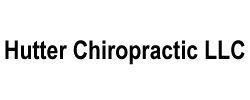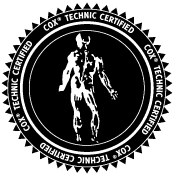Groton Back Pain-Preventing Lifting Techniques
Lifting an object off the ground appears to be a simple task for most folks. It is a task we do every day mostly without question. Clients at Shoreline Medical Services/ Hutter Chiropractic Office share these kinds of stories every day about how hard it is to pick something up off the ground or how getting a simple pencil up off the ground precipitated the worst back pain. Our Groton chiropractic patients tell us stories like this! Strengthening the quads with exercise as part of our chiropractic services, and lifting slowly and with a few suggestions in mind can potentially limit stress on the low back.
LIFTING TECHNIQUES
When it comes to posture, lifting is a notorious risk factor for low back pain. Lifting techniques like the stoop/lifting with the back, squat/lifting with the legs, and semi-squat/a mix of the other two are well-documented. Squat lifting seems to be the one most report is optimal. One group of researchers stated some odd findings though: squat lift training did not stop low back pain and stoop lifting is not a risk factor for low back pain. How do these two points reckon with suitable lifting for back pain prevention and management? They suggested that the lifting posture right for each person must be personalized as each lifting posture possesses its own biomechanical and kinematic patterns for muscle activation making certain lifting postures better for certain patients. Researchers described that stoop lifting was more metabolically efficient and less challenging to the cardiopulmonary system. This set of researchers also suggested working with each individual client on the proper lifting technique suitable for his/her body and lifting situation following the “calm tissue down, build tissue up, improve work capacity” system. (1) Shoreline Medical Services/ Hutter Chiropractic Office typically looks at each of our Groton chiropractic patients and offers ideas on managing and preventing back pain with exercise and other approaches.
A COUPLE TIPS ON LIFTING
There are some methods that may support us all when lifting. A special lifting trick known as BATT (a braced arm to thigh, one-handed lifting method to pick up objects with the dominant hand) substantially decreased low back loading during lifting items of 2 to 10 kg. Trunk flexion angles were significantly decreased. Compressive and anterior-posterior shear forces were significantly lower as well compared with unsupported lifting techniques. (2) That is a simple lifting tip we know our Groton chiropractic clients|we can all do! Lifting slowly is another idea that is said to lower loads on the lumbar spine. Stoop lifting had a greater lumbar spine lordosis range of motion and produced lower total and compressive lumbar loads than squat lifting (except at L5S1 where anterior shear loads were greater) and freestyle lifting. (3) Therefore slow down when lifting. Use your quads to squat lift. (If they are not very strong, Shoreline Medical Services/ Hutter Chiropractic Office has some exercises to strength them!)
CONTACT Shoreline Medical Services/ Hutter Chiropractic Office
Listen to this PODCAST with Dr. Tyler Lomnicki on The Back Doctors Podcast with Dr. Michael Johnson as he describes treatment of a man with a disc herniation among other conditions for which The Cox® Technic System of Spinal Pain Management of spinal manipulation contributed to his relief.
Schedule your Groton chiropractic appointment with Shoreline Medical Services/ Hutter Chiropractic Office today. When effortless tasks like lifting objects off the floor become problematic, know that Shoreline Medical Services/ Hutter Chiropractic Office is here to help find a way to make them better and easier for you and your spine!


